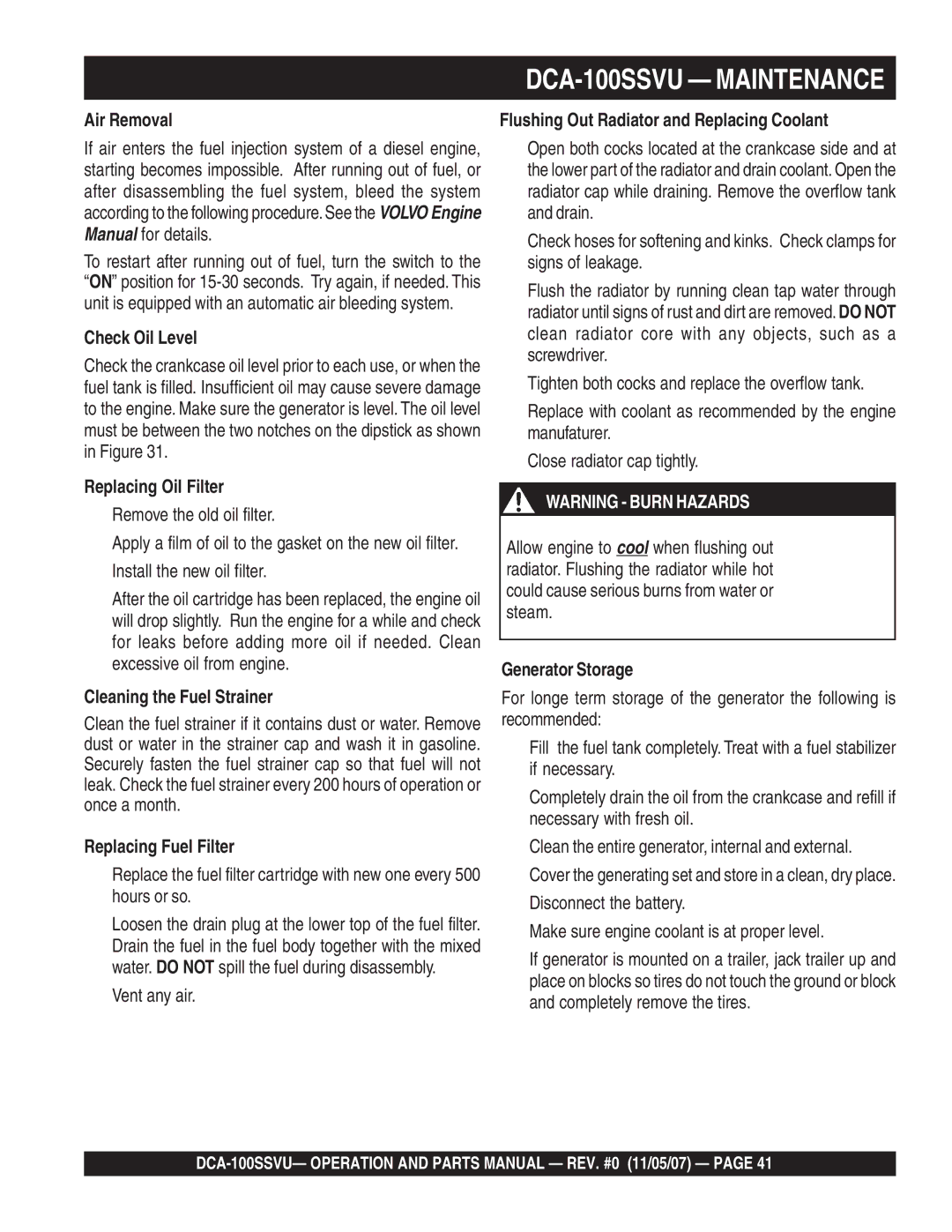DCA-100SSVU specifications
The Multiquip DCA-100SSVU is a powerful and versatile portable generator that is designed to meet the needs of a wide range of applications. Ideal for construction sites, events, and emergency power needs, this generator combines reliability with excellent performance.One of the standout features of the DCA-100SSVU is its robust 100 kVA output, making it suitable for powering larger equipment and multiple tools simultaneously. This generator is equipped with a rugged and durable construction, ensuring it can withstand the rigors of outdoor use. Its compact design allows for easy transport and placement in tight spaces, making it an ideal choice for contractors and event planners who need a reliable power source.
The DCA-100SSVU utilizes a highly efficient diesel engine, which not only provides high performance but also ensures lower fuel consumption compared to traditional gasoline generators. This fuel efficiency translates into cost savings over time, especially for users who need extended run times. Furthermore, the generator boasts a large fuel tank capacity, allowing for longer operational periods between refuels, enhancing productivity at job sites.
In terms of technology, the DCA-100SSVU incorporates advanced sound attenuation features that significantly reduce noise levels, making it suitable for use in noise-sensitive environments such as urban areas or residential neighborhoods. Its low noise operation is not only beneficial for compliance with local regulations but also for maintaining a comfortable working environment.
The generator also comes with a user-friendly control panel, equipped with indicators for monitoring fuel levels, output voltage, and engine status, ensuring that operators can easily manage the generator's performance. This intuitive design minimizes the learning curve for new users and enhances operational efficiency.
Safety features are paramount in the DCA-100SSVU design. It includes protective circuits against overloads and short circuits, ensuring that both the generator and connected equipment remain safe during operation. Moreover, the generator is designed with ample ventilation, preventing overheating and ensuring reliable performance even in demanding conditions.
In summary, the Multiquip DCA-100SSVU is a reliable and efficient portable generator that offers impressive power output, fuel efficiency, low noise levels, and a host of user-friendly features. It is an excellent choice for professionals who require a dependable power source for various applications, making it a standout option in the generator market.

